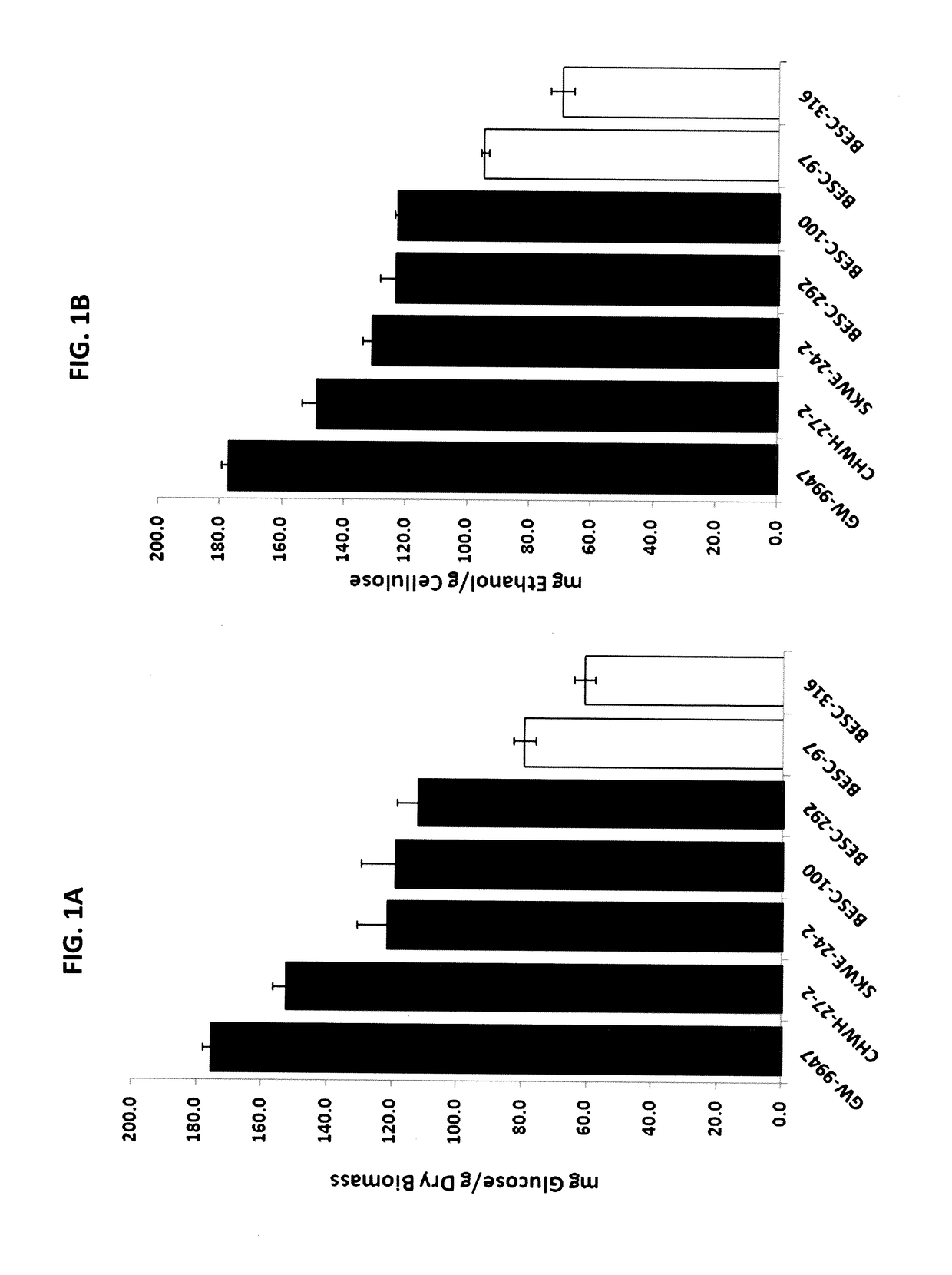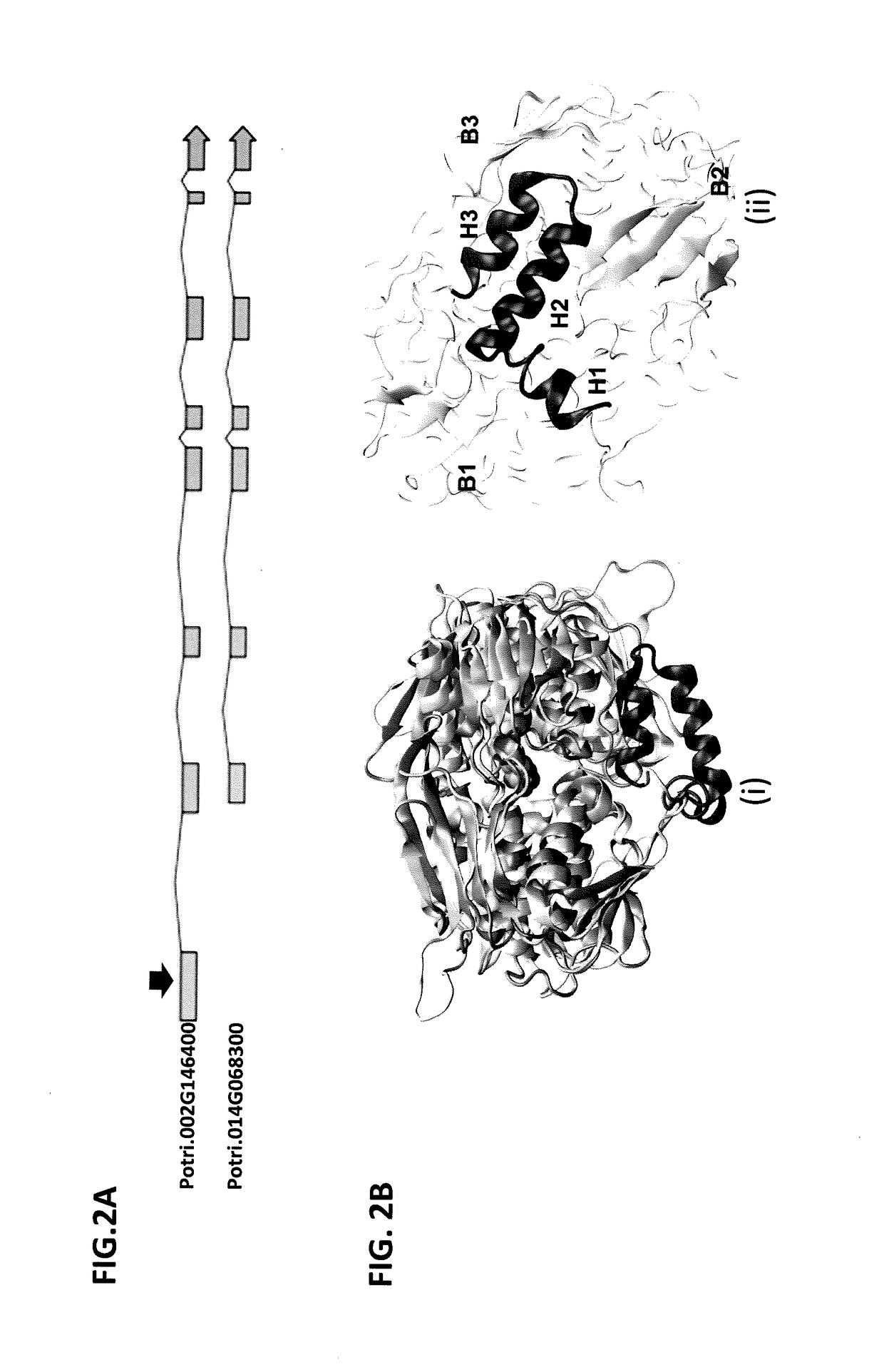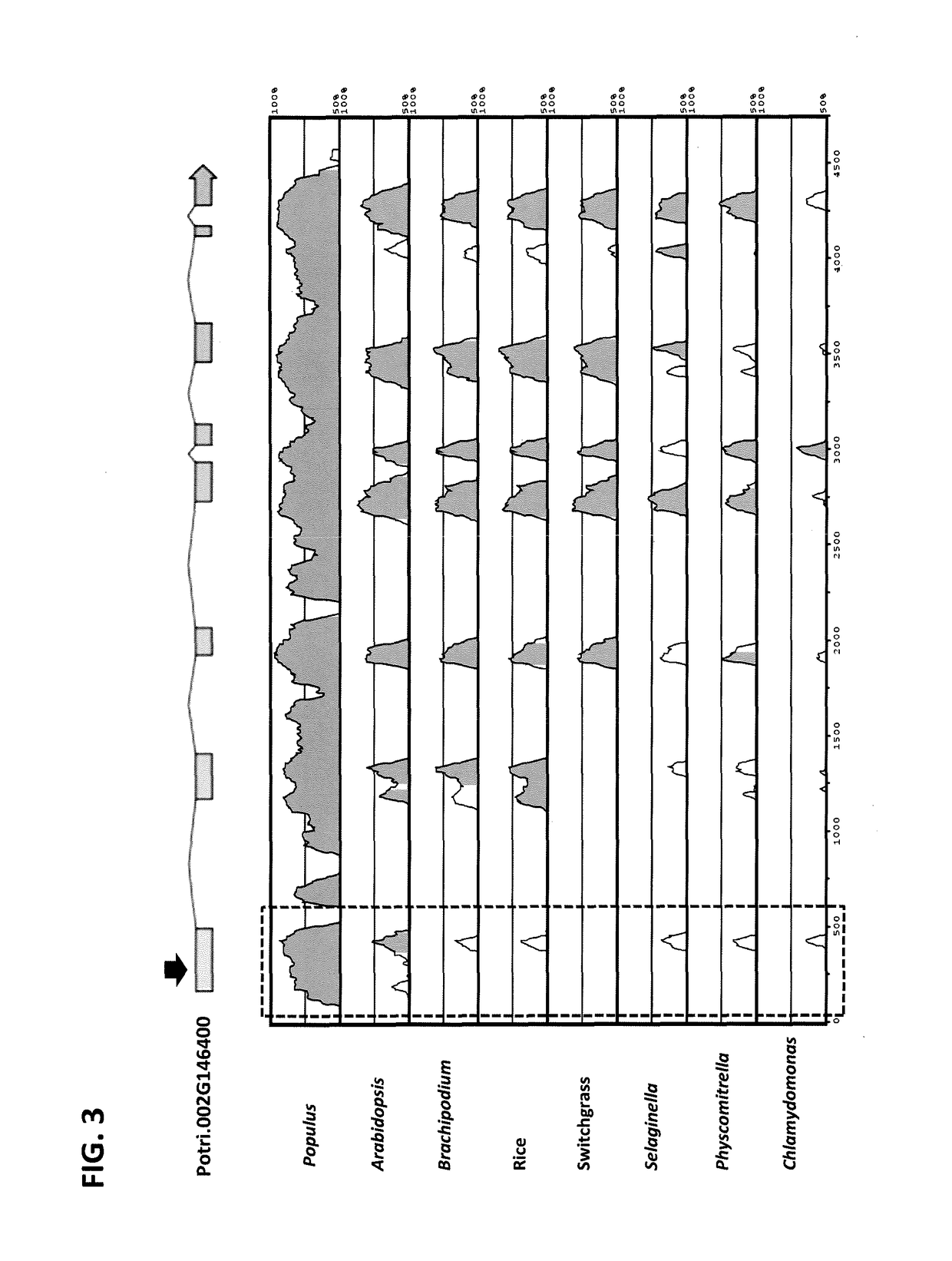Transcription factor which regulates flavonoid, phenylpropanoid, tyrosine, and tryptophan pathways
a transcription factor and phenylpropanoid technology, applied in the direction of biochemical apparatus and processes, enzymology, transferases, etc., can solve the problems of limiting the extraction process, affecting the biosynthesis of tyrosine and flavonoid, and difficult to break down lignins, so as to tyrosine and flavonoid biosynthesis, and reduce the lignin content. ,
- Summary
- Abstract
- Description
- Claims
- Application Information
AI Technical Summary
Benefits of technology
Problems solved by technology
Method used
Image
Examples
examples
[0120]The HTH motif is not found in the presumed prokaryotic progenitor of the enzyme. We assessed penetrance of the motif in plants by surveying 57 EPSP isofoiius derived from 42 sequenced plant genomes available in the Phytozome database (www.phytozome.net). Phylogenetic relatedness of sequences closely mirrored broader classification delineating monocot, dicot, non-vascular and algae clades of the kingdom plantae. The most striking feature based on this survey was that the exon encoding putative HTH motif is highly divergent between dicots and monocots, mosses and algae (FIG. 3). Sequence alignments suggests that, unlike other plants, dicots share a start codon and a motif of conserved MAQV(A / L / I)S(T) (SEQ. ID. NO: 3) amino acid residues further upstream from ancestral EPSP start site. Although the Populus Potri.014G068300 utilizes the down-stream start position which produces an ancestral isoform, analysis of genomic sequence revealed high levels of conservation and the presence...
PUM
| Property | Measurement | Unit |
|---|---|---|
| time | aaaaa | aaaaa |
| time | aaaaa | aaaaa |
| time | aaaaa | aaaaa |
Abstract
Description
Claims
Application Information
 Login to View More
Login to View More - R&D
- Intellectual Property
- Life Sciences
- Materials
- Tech Scout
- Unparalleled Data Quality
- Higher Quality Content
- 60% Fewer Hallucinations
Browse by: Latest US Patents, China's latest patents, Technical Efficacy Thesaurus, Application Domain, Technology Topic, Popular Technical Reports.
© 2025 PatSnap. All rights reserved.Legal|Privacy policy|Modern Slavery Act Transparency Statement|Sitemap|About US| Contact US: help@patsnap.com



